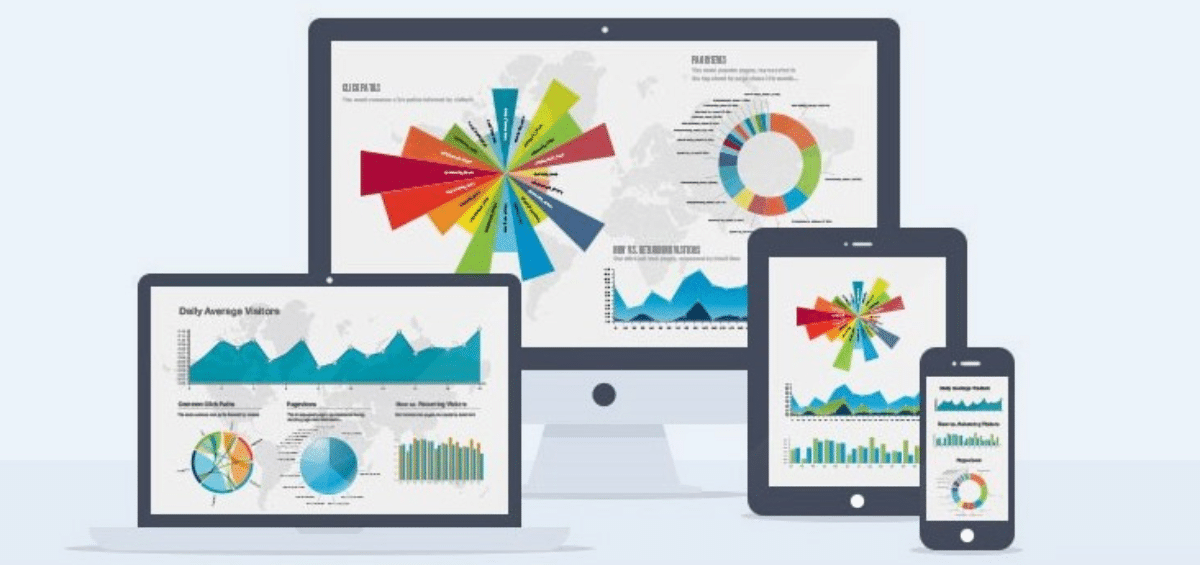C155C Chronicles
Exploring the latest trends and insights.
Data Visualization: Transforming Numbers into Art
Discover how data visualization transforms dull numbers into stunning art. Unlock insights and creativity in your data storytelling journey!
The Power of Data Visualization: How to Turn Raw Numbers into Compelling Stories
In today's data-driven world, data visualization plays a crucial role in transforming raw numbers into compelling narratives. By employing charts, graphs, and infographics, we can make complex datasets accessible and understandable. This process not only helps in identifying trends and patterns but also enhances decision-making. Effective visualization can engage the audience, enabling them to grasp the insights behind the data quickly and efficiently. For instance, a simple bar chart can illuminate sales growth over time more effectively than a spreadsheet filled with numbers.
Moreover, incorporating data visualization into presentations or reports can significantly boost their impact. Using visual elements creates a more memorable experience for your audience, allowing them to retain information better. When designing your visuals, it's essential to focus on clarity and relevance; the goal is to enhance understanding rather than overwhelm with unnecessary details. By telling a story with your data, you can evoke emotions and drive home critical messages, ensuring that your audience walks away with a clear understanding of the insights you've uncovered.

Techniques and Tools for Creating Stunning Data Visualizations
Creating stunning data visualizations is essential for effectively communicating insights and trends. To achieve this, consider employing techniques such as using appropriate color schemes, which can enhance readability and keep the audience engaged. Additionally, utilizing white space helps in preventing clutter, allowing your visuals to stand out. When designing your visuals, remember to maintain consistency in fonts and styles; this not only promotes professionalism but also strengthens your brand identity.
In terms of tools, there are several options that can help streamline the visualization process. Software like Tableau and Power BI enable users to create interactive dashboards and reports with minimal coding experience. For those looking for more customizable options, libraries such as D3.js offer powerful applications for crafting complex visualizations. Finally, don't overlook the simplicity of Google Data Studio, which can transform your data into stunning visuals quickly and efficiently, perfect for entrepreneurs and small businesses alike.
Why Data Visualization Matters: Insights into Hidden Patterns and Trends
Data visualization is a crucial tool in transforming raw data into meaningful insights. By utilizing various visual elements such as charts, graphs, and maps, complex datasets become more accessible and understandable. This is especially important in a world overloaded with information, where identifying hidden patterns and trends can lead to significant business decisions and strategic planning. Visual representation not only aids in quick comprehension but also enhances memory retention and facilitates better communication of the data story.
One of the most compelling reasons why data visualization matters is its ability to unveil correlations that might go unnoticed in traditional data analysis. For example, large datasets can obscure relationships that, when visualized, reveal critical insights. Techniques such as heat maps or scatter plots can highlight outliers, trends, or concentrations of activity, empowering users to react proactively. Ultimately, leveraging data visualization enables organizations to make informed decisions based on facts and evidence rather than hunches, paving the way for innovation and growth.